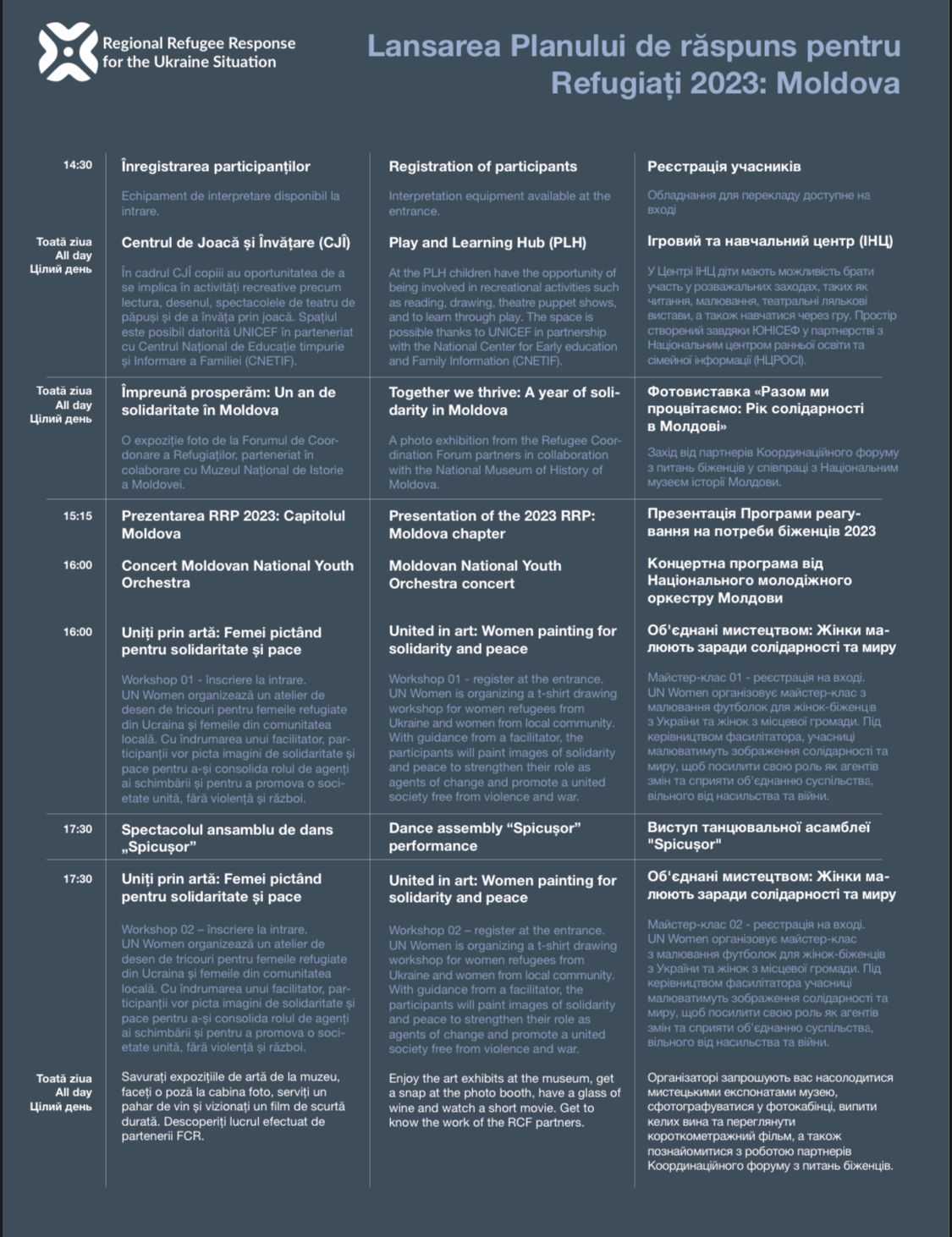  Events Archive Events Archive
The launch of the joint plan for 2023 to support refugees from the Republic of Moldova
March 3, 2023
 In response to the refugee crisis caused by the war in Ukraine, on March 3, 2023, in the Blue Hall of the National Museum of History of Moldova, a broad coalition of humanitarian partners launched the national chapter of the Inter-agency Regional Refugee Response Plan (PRR) for 2023. This plan, carried out under the auspices of the Refugee Coordination Forum (RCF), co-chaired by the Government and UNHCR together with the UN family and humanitarian partners, calls for continued financial support to help refugees and host communities in this country. In response to the refugee crisis caused by the war in Ukraine, on March 3, 2023, in the Blue Hall of the National Museum of History of Moldova, a broad coalition of humanitarian partners launched the national chapter of the Inter-agency Regional Refugee Response Plan (PRR) for 2023. This plan, carried out under the auspices of the Refugee Coordination Forum (RCF), co-chaired by the Government and UNHCR together with the UN family and humanitarian partners, calls for continued financial support to help refugees and host communities in this country. "The world watched with deep respect as communities across Moldova opened their hearts and homes to refugees fleeing Ukraine. The United Nations remains committed to supporting refugees and communities in Moldova," said Simon Springett, UN Resident Coordinator in the Republic of Moldova. "The humanitarian needs remain very high, which underlines the importance of international solidarity at this moment," said Francesca Bonelli, UNHCR Representative in the Republic of Moldova. "Together we can sustain and continue to strengthen the response to the refugee situation in this country so that it benefits both the refugees and the host community alike." Under the leadership of the Government of the Republic of Moldova, PRR brings together the efforts of 73 organizations, including UN agencies, national and international NGOs, faith-based institutions and civil society. During the event, was opened the exhibition "Together We Prosper: A Year of Solidarity in Moldova". The exhibition is composed of 18 banners, reflecting the work done over the past year by the people of Moldova and Ukraine, as well as the international community towards the refugee response. The images show only part of what Ukrainians have experienced, as well as the solidarity and efforts made by the authorities, volunteers, the international community and aid workers to welcome them and, over time, integrate them into society. The exhibition "Together We Prosper: A Year of Solidarity in Moldova" can be visited between March 3-19, 2023, in the upstairs hall of the National Museum of History of Moldova, 31 August 1989 str., 121A.
|
 31 August 1989 St., 121 A, MD 2012, Chisinau, Republic of Moldova
31 August 1989 St., 121 A, MD 2012, Chisinau, Republic of Moldova






















































